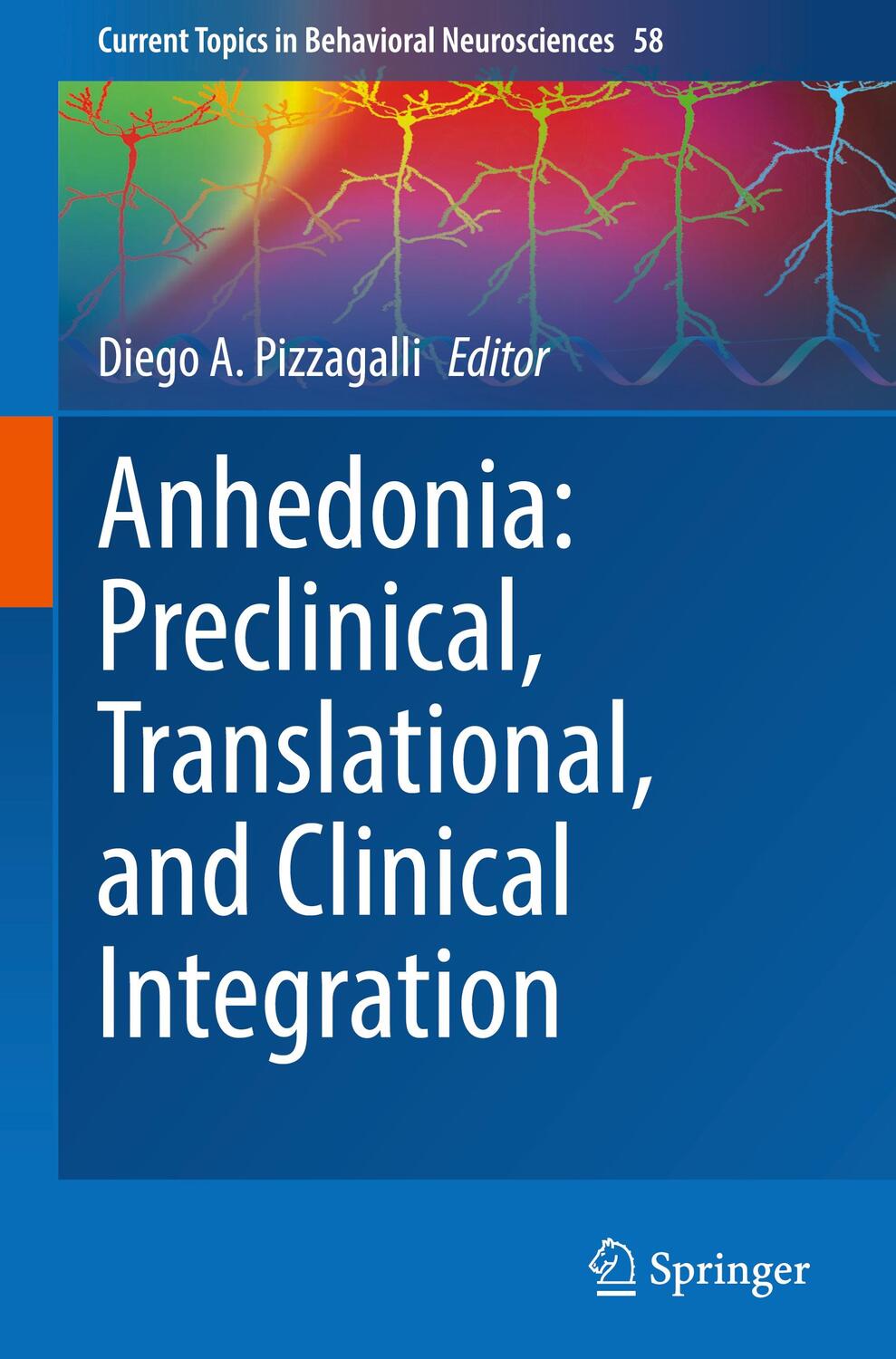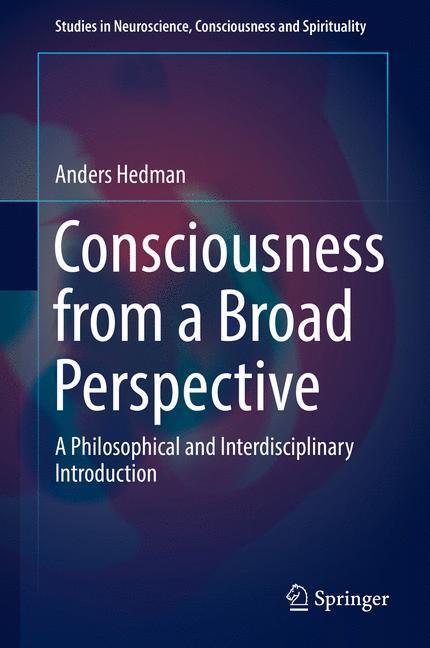213,99 €*
Versandkostenfrei per Post / DHL
Aktuell nicht verfügbar
Organized across five parts, the handbook starts with chapters on the history, etiology, and assessments of anhedonia (Part I), followed by a section on the role of anhedonia in psychiatric and neurological disorders (Part II). Using the RDoC Matrix as a guide, Part III presents chapters synthetizing preclinical and clinical findings on different reward processing subdomains (e.g., reward responsiveness, reward valuation, reward learning). Part IV is focused on selected special topics, including historical and current perspectives on the transdiagnostic nature and importance of social anhedonia, the role of inflammation in the pathophysiology of anhedonia, the use of computational modeling to ¿dissect¿ anhedonia and improve its understanding, and links between anhedonia and suicide. Finally, Part V includes chapters on pharmacological, psychological and neurostimulation treatments for anhedonia.
Organized across five parts, the handbook starts with chapters on the history, etiology, and assessments of anhedonia (Part I), followed by a section on the role of anhedonia in psychiatric and neurological disorders (Part II). Using the RDoC Matrix as a guide, Part III presents chapters synthetizing preclinical and clinical findings on different reward processing subdomains (e.g., reward responsiveness, reward valuation, reward learning). Part IV is focused on selected special topics, including historical and current perspectives on the transdiagnostic nature and importance of social anhedonia, the role of inflammation in the pathophysiology of anhedonia, the use of computational modeling to ¿dissect¿ anhedonia and improve its understanding, and links between anhedonia and suicide. Finally, Part V includes chapters on pharmacological, psychological and neurostimulation treatments for anhedonia.
Equips readers to develop a better understanding of the neurobiology, assessment, and treatment of anhedonia
Reviews exhaustively the burgeoning preclinical and clinical literature on anhedonia and motivational deficits
Parses anhedonic phenotypes according to modern conceptualizations of neuropsychiatric disorders
Section I. Anhedonia - History, Etiology, and Assessments.- 1. Historical Perspective.- 2. Clinical and Behavioral Assessments.- 3. Developmental Trajectories: Preclinical.- 4. Developmental Trajectories: Clinical.- 5. Genetics Contributions.- 6. Environmental Contributions.- Section II. Anhedonia in Psychiatric and Neurological Disorders.- 7. Depression and Bipolar Disorder.- 8. Schizophrenia.- 9. Substance Use Disorder.- 10. Nicotine Dependence.- 11. Posttraumatic Stress Disorder.- 12. Anxiety.- 13. Eating Disorders.- 14. Autism and Developmental Disorders.- 15. Neurodegenerative Disorders.- Section III. Reward Processing Systems in Anhedonia.- Reward Responsiveness.- 16. Pleasure.- 17. Anticipation.- Reward Valuation.- 18. Reward Value - Delay and Reward Magnitude.- 19. Effort/Motivation.- Reward Learning.- 20. Reward Prediction Error.- 21. Probabilistic and Reinforcement Learning.- Section IV. Treatments.- 22. Pharmacological Treatments for Anhedonia.- 23. Psychological Treatments for Anhedonia.- 24. Neurostimulation.- Section V. Special Topics.- 25. Inflammation and Anhedonia.- 26. Computational Modeling of Anhedonia.- 27. Anhedonia and Suicide.
| Erscheinungsjahr: | 2022 |
|---|---|
| Fachbereich: | Therapie |
| Genre: | Medizin |
| Rubrik: | Wissenschaften |
| Medium: | Buch |
| Seiten: | 548 |
| Reihe: | Current Topics in Behavioral Neurosciences |
| Inhalt: |
xi
535 S. 1 s/w Illustr. 535 p. 1 illus. |
| ISBN-13: | 9783031096822 |
| ISBN-10: | 3031096827 |
| Sprache: | Englisch |
| Ausstattung / Beilage: | HC runder Rücken kaschiert |
| Einband: | Gebunden |
| Redaktion: | Pizzagalli, Diego A. |
| Herausgeber: | Diego A Pizzagalli |
| Auflage: | 1st ed. 2022 |
| Hersteller: |
Springer International Publishing
Springer International Publishing AG Current Topics in Behavioral Neurosciences |
| Maße: | 241 x 160 x 35 mm |
| Von/Mit: | Diego A. Pizzagalli |
| Erscheinungsdatum: | 10.08.2022 |
| Gewicht: | 0,98 kg |
Equips readers to develop a better understanding of the neurobiology, assessment, and treatment of anhedonia
Reviews exhaustively the burgeoning preclinical and clinical literature on anhedonia and motivational deficits
Parses anhedonic phenotypes according to modern conceptualizations of neuropsychiatric disorders
Section I. Anhedonia - History, Etiology, and Assessments.- 1. Historical Perspective.- 2. Clinical and Behavioral Assessments.- 3. Developmental Trajectories: Preclinical.- 4. Developmental Trajectories: Clinical.- 5. Genetics Contributions.- 6. Environmental Contributions.- Section II. Anhedonia in Psychiatric and Neurological Disorders.- 7. Depression and Bipolar Disorder.- 8. Schizophrenia.- 9. Substance Use Disorder.- 10. Nicotine Dependence.- 11. Posttraumatic Stress Disorder.- 12. Anxiety.- 13. Eating Disorders.- 14. Autism and Developmental Disorders.- 15. Neurodegenerative Disorders.- Section III. Reward Processing Systems in Anhedonia.- Reward Responsiveness.- 16. Pleasure.- 17. Anticipation.- Reward Valuation.- 18. Reward Value - Delay and Reward Magnitude.- 19. Effort/Motivation.- Reward Learning.- 20. Reward Prediction Error.- 21. Probabilistic and Reinforcement Learning.- Section IV. Treatments.- 22. Pharmacological Treatments for Anhedonia.- 23. Psychological Treatments for Anhedonia.- 24. Neurostimulation.- Section V. Special Topics.- 25. Inflammation and Anhedonia.- 26. Computational Modeling of Anhedonia.- 27. Anhedonia and Suicide.
| Erscheinungsjahr: | 2022 |
|---|---|
| Fachbereich: | Therapie |
| Genre: | Medizin |
| Rubrik: | Wissenschaften |
| Medium: | Buch |
| Seiten: | 548 |
| Reihe: | Current Topics in Behavioral Neurosciences |
| Inhalt: |
xi
535 S. 1 s/w Illustr. 535 p. 1 illus. |
| ISBN-13: | 9783031096822 |
| ISBN-10: | 3031096827 |
| Sprache: | Englisch |
| Ausstattung / Beilage: | HC runder Rücken kaschiert |
| Einband: | Gebunden |
| Redaktion: | Pizzagalli, Diego A. |
| Herausgeber: | Diego A Pizzagalli |
| Auflage: | 1st ed. 2022 |
| Hersteller: |
Springer International Publishing
Springer International Publishing AG Current Topics in Behavioral Neurosciences |
| Maße: | 241 x 160 x 35 mm |
| Von/Mit: | Diego A. Pizzagalli |
| Erscheinungsdatum: | 10.08.2022 |
| Gewicht: | 0,98 kg |











